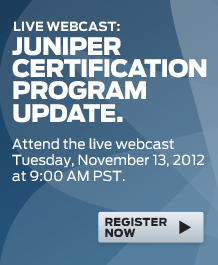Network Operating System Certifications Details
The Macintosh project started in early 1979 with Jef Raskin, who envisioned an easy-to-use, low-cost computer for the average consumer. In September 1979, Raskin began looking for an engineer who could put together a prototype. Bill Atkinson, a member of the Apple Lisa team, introduced him to Burrell Smith, a service technician who had been hired earlier that year.
In January 1981, Steve Jobs completely took over the Macintosh project. Jobs and a number of Apple engineers visited Xerox PARC in December 1979, three months after the Lisa and Macintosh projects had begun. After hearing about the pioneering GUI technology being developed at Xerox PARC from former Xerox employees like Raskin, Jobs negotiated a visit to see the Xerox Alto computer and Smalltalk development tools in exchange for Apple stock options.[3] The final Lisa and Macintosh operating systems used concepts from the Xerox Alto, but many elements of the graphical user interface were created by Apple including the menubar, pop-up menus and the concepts of drag and drop and direct manipulation.[4]
Unlike the IBM PC, which used 8 kB of system ROM for power-on self-test (POST) and basic input/output system (BIOS), the Mac ROM was significantly larger (64 kB) and held key OS code. Much of the original Mac ROM was coded by Andy Hertzfeld, a member of the original Macintosh team. He was able to conserve some of the precious ROM space by interleaving some of the assembly language code. In addition to coding the ROM, he also coded the kernel, the Macintosh Toolbox and some of the desktop accessories (DAs) as well. The icons of the operating system, which represented folders and application software were designed by Susan Kare, who later designed the icons for Microsoft Windows 3.0. Bruce Horn and Steve Capps wrote thIn 1995 Pradeep Sindhu, a principal scientist at Xerox's Palo Alto Research Center, returned from vacation with the idea to start a company to supply high-performance routers to support the quickly emerging Internet. Sindhu started the company in February 1996 with $200,000 in seed money from powerful venture capital firm Kleiner Perkins Caufield & Byers, the deal led by Vinod Khosla. He hired two other engineers, Bjorn Liencres from Sun Microsystems and Dennis Ferguson from MCI. For business expertise, Sindhu recruited Scott Kriens, co-founder of StrataCom.
The Macintosh project started in early 1979 with Jef Raskin, who envisioned an easy-to-use, low-cost computer for the average consumer. In September 1979, Raskin began looking for an engineer who could put together a prototype. Bill Atkinson, a member of the Apple Lisa team, introduced him to Burrell Smith, a service technician who had been hired earlier that year.
In January 1981, Steve Jobs completely took over the Macintosh project. Jobs and a number of Apple engineers visited Xerox PARC in December 1979, three months after the Lisa and Macintosh projects had begun. After hearing about the pioneering GUI technology being developed at Xerox PARC from former Xerox employees like Raskin, Jobs negotiated a visit to see the Xerox Alto computer and Smalltalk development tools in exchange for Apple stock options.[3] The final Lisa and Macintosh operating systems used concepts from the Xerox Alto, but many elements of the graphical user interface were created by Apple including the menubar, pop-up menus and the concepts of drag and drop and direct manipulation.[4]
Unlike the IBM PC, which used 8 kB of system ROM for power-on self-test (POST) and basic input/output system (BIOS), the Mac ROM was significantly larger (64 kB) and held key OS code. Much of the original Mac ROM was coded by Andy Hertzfeld, a member of the original Macintosh team. He was able to conserve some of the precious ROM space by interleaving some of the assembly language code. In addition to coding the ROM, he also coded the kernel, the Macintosh Toolbox and some of the desktop accessories (DAs) as well. The icons of the operating system, which represented folders and application software were designed by Susan Kare, who later designed the icons for Microsoft Windows 3.0. Bruce Horn and Steve Capps wrote thIn 1995 Pradeep Sindhu, a principal scientist at Xerox's Palo Alto Research Center, returned from vacation with the idea to start a company to supply high-performance routers to support the quickly emerging Internet. Sindhu started the company in February 1996 with $200,000 in seed money from powerful venture capital firm Kleiner Perkins Caufield & Byers, the deal led by Vinod Khosla. He hired two other engineers, Bjorn Liencres from Sun Microsystems and Dennis Ferguson from MCI. For business expertise, Sindhu recruited Scott Kriens, co-founder of StrataCom.
Network Operating System Certifications
Network Operating System Certifications
Network Operating System Certifications
Network Operating System Certifications
Network Operating System Certifications
Network Operating System Certifications
Network Operating System Certifications
Network Operating System Certifications
Network Operating System Certifications
Network Operating System Certifications
Network Operating System Certifications
Network Operating System Certifications
Network Operating System Certifications
Network Operating System Certifications
Network Operating System Certifications
Network Operating System Certifications
Network Operating System Certifications
Network Operating System Certifications
Network Operating System Certifications
Network Operating System Certifications
Network Operating System Certifications
Network Operating System Certifications
Network Operating System Certifications
Network Operating System Certifications
Network Operating System Certifications
Network Operating System Certifications
Network Operating System Certifications
Network Operating System Certifications
Network Operating System Certifications
Network Operating System Certifications
Network Operating System Certifications



















No comments:
Post a Comment